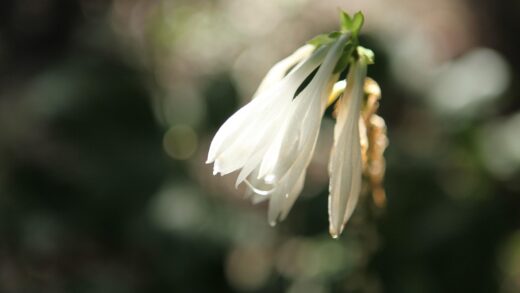The topic of overwintering marigolds often raises questions among gardeners, as these plants are predominantly grown as tender annuals. In the vast majority of climates, marigolds complete their entire life cycle—from germination to flowering and seed production—within a single growing season, and are then killed off by the first hard frost of autumn. Their inability to tolerate freezing temperatures is the primary reason they are not considered perennial in most regions. However, understanding the nuances of their life cycle and the options available can help gardeners make the most of their plants, even as the season draws to a close.
The term “annual” means that the plant’s natural life span is one year. For marigolds, this means that once the plant has produced its seeds, its biological purpose is fulfilled, and it naturally begins to decline. The arrival of frost simply hastens this inevitable process. Therefore, for gardeners in temperate climates with cold winters, the concept of overwintering a marigold plant in the traditional sense—leaving it in the garden to regrow the following spring—is not a viable option. The focus for these gardeners should instead shift to other methods of continuing their marigold legacy.
The most practical and reliable method for “overwintering” marigolds is not by saving the plant itself, but by saving its seeds. This approach embraces the plant’s annual nature and ensures a fresh, vigorous start the following spring. Collecting and storing seeds from your favourite marigold plants is a simple and rewarding process that allows you to preserve the specific traits of plants you admired and propagate them for years to come, all at no cost.
In very specific, milder climates, or through the intervention of bringing plants indoors, some marigold varieties can be kept alive through the winter months. Certain species, like Tagetes lucida (Mexican tarragon), are naturally more perennial in habit in warmer zones. For the common garden varieties, bringing a potted plant indoors before the first frost is the only way to keep that specific plant alive. While this is possible, it presents its own set of challenges, including providing adequate light and care to keep the plant healthy indoors.
Understanding the annual nature of marigolds
Marigolds, particularly the common African (Tagetes erecta) and French (Tagetes patula) varieties that are staples in summer gardens, are classified as tender annuals. This botanical classification is key to understanding why they do not typically survive winter. An annual plant is one that germinates from a seed, grows, flowers, produces seed, and dies, all within one growing season. This is a fundamental aspect of their genetic makeup and life strategy. Their primary goal is to reproduce via seed to ensure the continuation of the species in the following year.
More articles on this topic
The term “tender” in their classification refers specifically to their lack of tolerance for cold temperatures. The cells within the plant’s tissues are composed largely of water. When temperatures drop below freezing (0 degrees Celsius), this water freezes and expands, forming ice crystals that rupture the cell walls. This cellular damage is irreversible and causes the foliage, stems, and flowers to turn black or brown and become mushy. This is why the first hard frost of autumn marks a definitive end to the marigold season in most gardens.
It is important to distinguish between annuals and perennials. Perennial plants are those that live for more than two years. They have adaptations, such as dormant root systems or woody structures, that allow them to survive the winter cold and regrow from the same rootstock each spring. Marigolds lack these survival mechanisms. Their energy is entirely focused on the rapid growth and prolific seed production required to complete their life cycle in a short period. They do not invest resources in developing hardy, overwintering root systems.
While most marigolds are true annuals, it is worth noting that in their native, frost-free habitats in Mexico and Central America, some species may behave as short-lived perennials. However, when cultivated in climates with freezing winters, this perennial tendency is irrelevant, and they must be treated as annuals. Embracing their annual nature and planning for it is the most realistic and successful approach for gardeners in temperate zones. This means planning to replant them each spring, either from purchased seedlings or from seeds you have saved.
Saving seeds for next season
The most practical and rewarding method for ensuring you have marigolds in your garden next year is to save their seeds. This simple process allows you to preserve the genetic line of your favourite plants and is an excellent way to practice sustainable gardening. The first step is to select the right flowers for seed collection. Choose the healthiest, most vigorous plants with the most desirable blooms. It is also important to save seeds from open-pollinated or heirloom varieties if you want the new plants to be true to the parent. Seeds saved from hybrid varieties may not produce plants with the same characteristics.
More articles on this topic
To collect the seeds, you must allow the chosen flower heads to fully mature and dry on the plant. Resist the urge to deadhead these specific blooms. As the flower fades, the petals will wither and the base of the flower, known as the seed head, will begin to swell and turn from green to brown. The process is complete when the entire seed head is dry, brown, and crispy to the touch. This indicates that the seeds inside are mature and viable. It is best to do this during a spell of dry weather, as damp conditions can cause the seed heads to mould.
Once the seed heads are fully dry, you can harvest them by simply snipping them off the plant with a pair of scissors. To extract the seeds, gently break open the dried seed head over a bowl or a piece of paper. You will find dozens of slender, black or dark brown seeds, often with a lighter-coloured tuft at one end. Each of these tiny seeds has the potential to grow into a full-sized marigold plant the following spring.
After extracting the seeds, it is crucial to ensure they are completely dry before storing them to prevent mould and mildew. Spread them out on a paper towel or a screen in a well-ventilated area away from direct sunlight for several days. Once they are thoroughly dry, place them in a clearly labelled paper envelope or a small glass jar. Store the seeds in a cool, dark, and dry location, such as a drawer, a cupboard, or a refrigerator. Properly stored marigold seeds can remain viable for several years, providing you with a free and reliable source of new plants each spring.
Bringing marigolds indoors for winter
While not a common practice, it is possible to overwinter a specific marigold plant by bringing it indoors before the first frost. This method is most feasible for plants that are already growing in containers. If you want to save a marigold that is planted in the garden, you will need to carefully dig it up and transplant it into a suitable pot. When doing so, try to get as much of the root ball as possible to minimize transplant shock. This entire process should be done in early autumn, well before temperatures begin to drop significantly.
Before bringing any plant indoors, it is essential to inspect it thoroughly for any pests, such as aphids, spider mites, or whiteflies. The warm, dry environment of a centrally heated home can cause pest populations to explode. It is a good idea to give the plant a gentle spray with water to dislodge any hitchhikers, and you may even want to treat it with insecticidal soap as a preventative measure. Check the undersides of leaves and the junctions between stems carefully.
The biggest challenge to keeping a marigold alive indoors over the winter is providing adequate light. Marigolds are sun-loving plants that require at least six hours of direct sunlight per day to thrive. A spot in front of your sunniest south-facing window is the best option. Even with a sunny window, the intensity and duration of natural light during the winter months are much lower, so you may need to supplement with a grow light for 12 to 14 hours a day to keep the plant from becoming weak and leggy.
Indoors, you will need to adjust your care routine. Water the plant only when the top inch or two of soil feels dry to the touch, as indoor plants dry out more slowly and are more susceptible to overwatering. Do not fertilize the plant during the winter months, as its growth will naturally slow down. You can expect the plant to produce fewer, if any, flowers during this time. The goal is simply to keep it alive and healthy until it can be moved back outdoors in the spring after the danger of frost has passed.
End-of-season garden cleanup
For the vast majority of gardeners who treat their marigolds as annuals, the end of the season signals the time for an important task: garden cleanup. Once the first hard frost has killed the plants, they should be removed from the garden beds. Leaving the dead plant matter in place over the winter can create a refuge for pests and disease pathogens to overwinter, potentially leading to problems in the following growing season. Pulling the plants out, roots and all, helps to maintain a clean and healthy garden environment.
The removed marigold plants can be a valuable addition to your compost pile. As long as the plants were not seriously afflicted with any fungal or bacterial diseases, they will break down over the winter and contribute to the rich organic matter that will nourish your garden in the future. Chop the stems and foliage into smaller pieces before adding them to the pile to help speed up the decomposition process. This is an excellent way to recycle the nutrients that the plants took up from the soil during their growth.
Some gardeners choose to till the marigold plants directly back into the soil, a practice known as “green manuring.” This is particularly popular among those who use marigolds for their nematode-suppressing properties. Chopping up the plants and incorporating the leaves, stems, and especially the roots into the soil allows the pest-deterring chemical compounds to be released as the plant material decomposes. This can help to reduce nematode populations in the soil over the winter, benefiting the crops you plant in that location next spring.
After clearing out the old plants, you can take the opportunity to prepare the bed for winter. This might involve spreading a final layer of compost or shredded leaves over the surface. This layer acts as a protective mulch over the winter, preventing soil erosion from wind and rain, suppressing winter weeds, and insulating the soil. As the mulch breaks down, it will continue to add valuable organic matter and nutrients, leaving your garden bed fertile, healthy, and ready for planting when spring arrives.


















